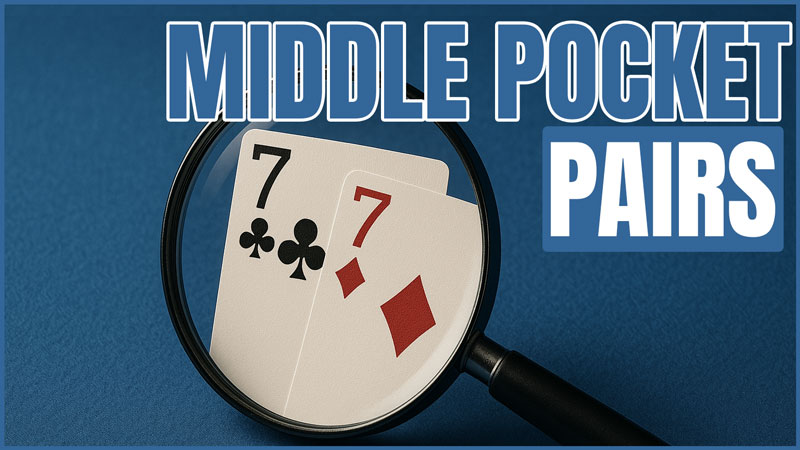How to Play Middle Pocket Pairs: Knowing when to Call, Fold or Raise
Poker is a game that involves more strategy than luck, and if you want to improve your skills and play more confidently, it helps to understand the more intricate aspects of the game.
Pairs are weapons in the game of poker and if played rightly can be very beneficial to your standing in the game.
Middle Pocket Pairs: Pocket 8’s to Pocket Jack’s
Playing with pocket pairs is also one of the most troublesome areas for players as the decisions they make with these cards can often prove to be the turning point of their entire game. What we are going to talk about in this Bitesize Strategy article is middle pocket pairs, which are basically pairs from pocket 8’s to pocket Jacks.
The most crucial time for middle pocket pairs is before the flop. At this point players are unsure whether they should raise, fold or simply call with their pocket pair. This is where strategy comes in and by gaining knowledge about this, players are able to make smart decisions with their cards and stay in control.
When to Call
Just making a call before the flop can catch opponents unaware and gives little away to them about the hand you are holding. By doing so you are both limiting your exposure to the hand (by committing less to the pot) and also masking the potential strength of your hand.
The opposite side of this is that it allows your opponents into the hand cheap with what maybe a weaker hand than yours and gives them the opportunity to overtake you by hitting on the flop.
By calling before the flop, you retain the opportunity to reassess the situation after the flop is dealt. If the flop appears dangerous and contains one or two Overcards and your middle pocket pair is unlikely to win, you can fold early and avoid committing additional money to the pot.
It also retains a lot of potential in your hand, by disguising the strength of your hand and making it a sleeping giant, so this way if you hit a big hand on the flop by catching trips then you may be able to get a better payout.
Calling before the flop can be a useful strategy in games where raising does not significantly reduce the number of opponents, particularly when players tend to call raises frequently. However, it’s important to assess each situation carefully. Remember that your call keeps the pot small and controllable, so see how that works for you and use it to your advantage.
When to Fold
Fold your middle pocket pairs if you have strong reasons to believe your opponent holds a higher pair, especially before the flop. It’s better to make cautious decisions based on available information to avoid unnecessary losses.
Sometimes you might fold your pairs without winning that hand, but cautious play can help protect your bankroll. Middle pocket pairs require careful consideration to avoid costly mistakes.
Go with your instincts on this one when the play indicates a higher hand in play and you are confident in your read then dump the cards – they can’t hurt your bankroll in the muck.
When to Raise
Raises before the flop can work well with middle pocket pairs; however this does not mean that you should make a raise just because you think you have a good pair. It is essential to evaluate the playing field and see if the raise would be beneficial by thinning out the field.
Middle pocket pairs often present difficult decisions after the flop, as there is frequently at least one Overcard present. It is important to carefully evaluate the situation and consider whether an opponent may have hit an Overcard or holds a higher pocket pair.
The more opponents in the hand, the more likely that one of those opponents will connect with the Overcard(s). So this is where taking control of the hand before the flop, making a raise and thinning the field of players in the pot is beneficial, as it reduces the chances of an opponent hitting an Overcard (due to their being less opponents).
Middle Pocket Pairs: Often diminish in value as the hand progresses
The key point to remember is that while middle pocket pairs can be a strong starting hand, they are often beaten by the end of the hand. It’s important to control the hand, and play carefully to minimise your losses when you do lose and to maximise your potential returns when you make strong hands like trips or better.
Middle pocket pairs can be challenging for beginners because they may look pretty and appear strong but can lead to significant losses if not played carefully. It is important to approach these hands with caution and an awareness of their risks.
